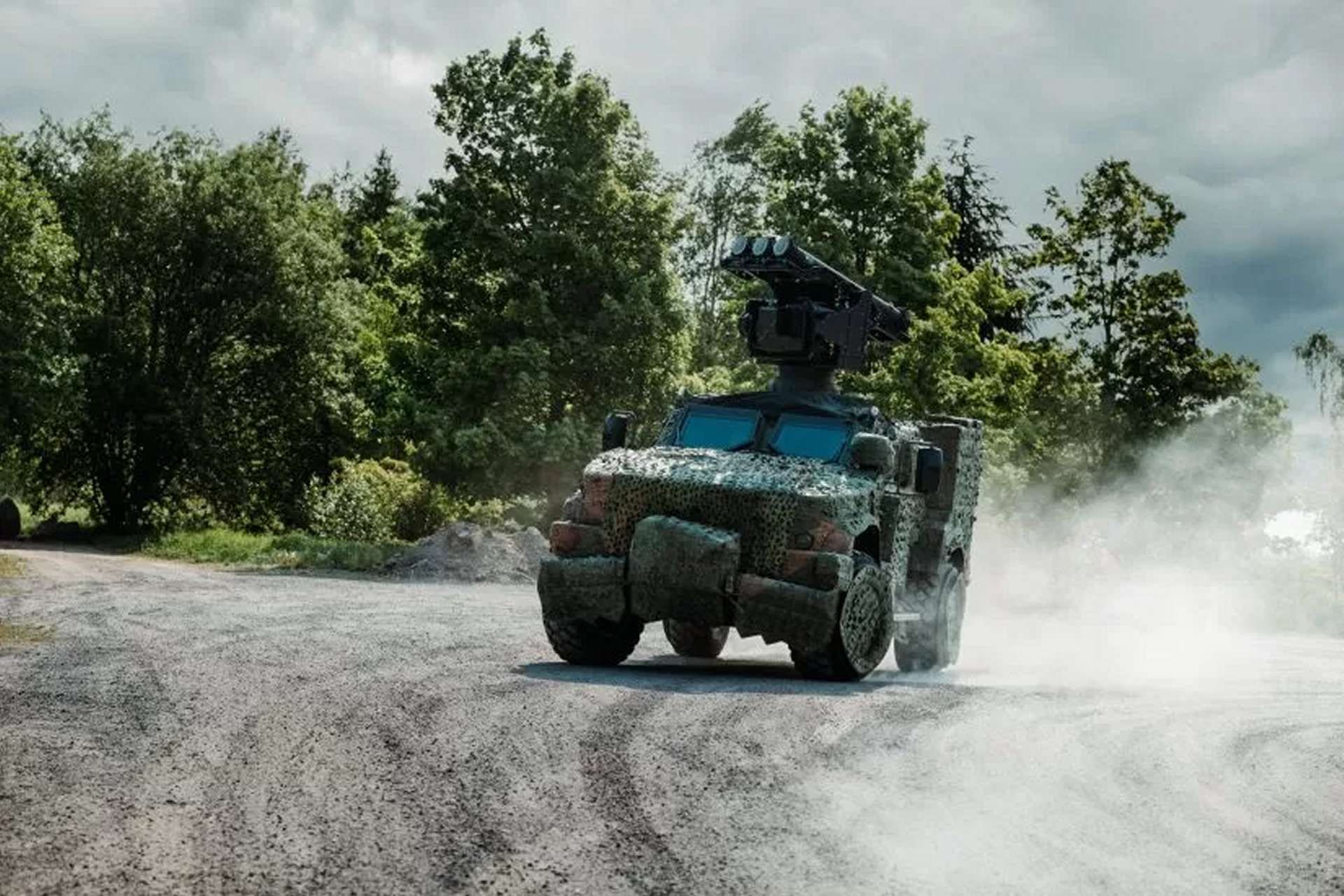Breaking News
Lithuania Acquires Swedish MSHORAD Air Defense System.
The Lithuanian Ministry of Defence has announced the acquisition of a mobile short-range air defence system, the RBS70 NG (MSHORAD), from the Swedish company Saab Dynamics for €147 million. The Defence Materiel Agency has finalized agreements with Saab Dynamics, with delivery scheduled between 2025 and 2027.
Follow Army Recognition on Google News at this link

Lithuania has announced the acquisition of an RBS70 NG (MSHORAD). (Picture source: SAAB)
"The MSHORAD system is crucial for protecting certain installations, sites, and critical infrastructure. Its mobility significantly enhances the capabilities of the Lithuanian Armed Forces. Currently, we use the older RBS70 air defence system and Bolide missiles," Defence Minister Laurynas Kasčiūnas said in a press release.
The Mobile Short-Range Air Defence (MSHORAD) is a compact air defence solution developed by the Swedish company Saab, specializing in aerospace and defence. The finalized version of this system was unveiled in March 2022. The MSHORAD air defence system includes a Giraffe 1X multi-mission 3D radar and a mobile firing unit equipped with RBS 70 NG short-range missiles. These radar and missile systems are coordinated by Saab’s ground-based air defence command and control (GBAD C2) system.
Designed to identify and counter a wide range of aerial threats, the MSHORAD can handle threats from fighters, armed helicopters, missiles and rockets, as well as newer threats such as unmanned aerial vehicles (UAVs) and loitering munitions. With a detection range of 75 km and an interception range of 9 km, the system can quickly and effectively track and neutralize aerial threats.
The MSHORAD is particularly flexible due to its modular design, which allows for easy installation on various vehicle platforms, making the system highly mobile and adaptable to different roles. It is designed to move with ground combat units, offering persistent protection against aerial threats in a dynamic battle zone. After threat evaluation and weapon assignment by the GBAD C2 system, the missiles can be engaged in less than five seconds to eliminate multiple targets. Additionally, the MSHORAD can be rapidly deployed and can also operate from the tops of buildings, providing an additional operational advantage.
The Giraffe 1X radar is a compact, high-performance 3D multi-mission radar primarily used for short-range surveillance and surface-to-air defence. Equipped with gallium nitride circuits, it offers 360° coverage and situational awareness up to 75 km. It can detect hard-to-target drones, even those that are small, slow, and low-flying.
The RBS 70 NG missile system, based on the RBS 70 short-range surface-to-air missile system, uses laser-guided, unjammable missiles with automatic target tracking and multi-target capabilities. This system can operate day and night and can be rapidly reloaded in the field. It includes an automatic target tracker and integrated night sight.
Tests and demonstrations have confirmed the effectiveness of the MSHORAD system, including successful live firings in August 2022 in Sweden. Saab has also conducted integration and test firings in cooperation with the Czech defence company SVOS.
The MSHORAD was first showcased at the Defence and Security Equipment International (DSEI) exhibition in London in 2017 and has been displayed at other international arms industry fairs. In January 2024, Saab received a contract worth 300 million Swedish kronor from the Swedish Defence Materiel Administration to deploy the system in two configurations installed on the BvS10 armoured vehicle. Other orders for the RBS 70 NG system and the Giraffe 1X radar have been placed by European countries, confirming the interest and effectiveness of this defence system.
Additionally, Kasčiūnas previously mentioned that Lithuania is considering acquiring Piorun air defence systems from Poland and is also considering additional medium-range air defence systems. By September, the Ministry of Defence will decide between the NASAMS and Iris-T systems, which are not yet used by the Lithuanian Armed Forces.


























